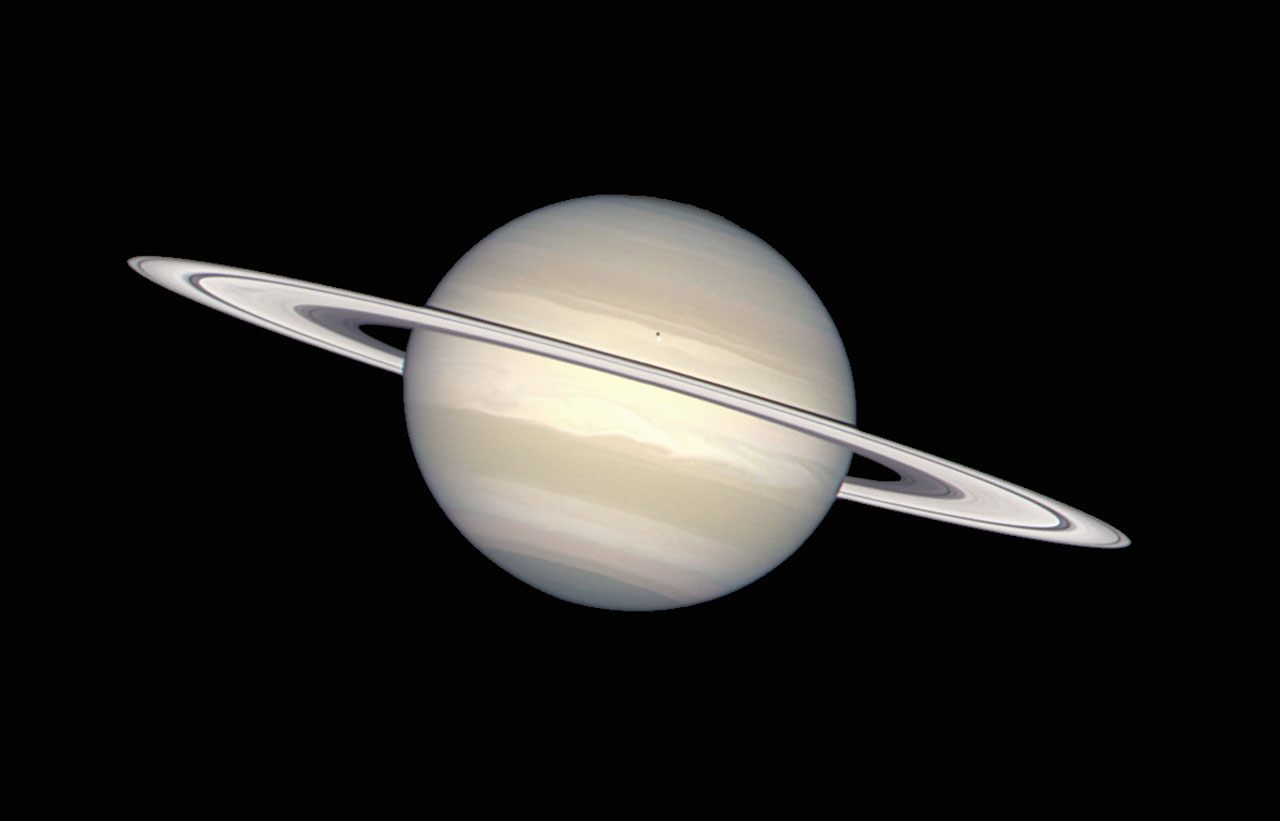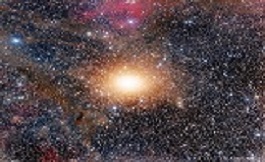
This dramatic image offers a peek inside a cavern of roiling dust and gas where thousands of stars are forming. The image, taken by the Advanced Camera for Surveys (ACS) aboard NASA/ESA Hubble Space Telescope, represents the sharpest view ever taken of this region, called the Orion Nebula.

The ring swirling around Saturn consists of chunks of ice and dust. Saturn itself is made of ammonia ice and methane gas. The little dark spot on Saturn is the shadow from Saturn's moon Enceladus.

The NASA/ESA Hubble Space Telescope captured this image of NGC 7049 in the constellation of Indus, in the southern sky. A family of globular clusters appears as glittering spots dusted around the galaxy halo. Astronomers study the globular clusters in NGC 7049 to learn more about its formation and evolution.

What's behind Betelgeuse? One of the brighter and more unusual stars in the sky, the red supergiant star Betelgeuse can be found in the direction of famous constellation Orion. Betelgeuse, however, is actually well in front of many of the constellation's other bright stars, and also in front of the greater Orion Molecular Cloud Complex.